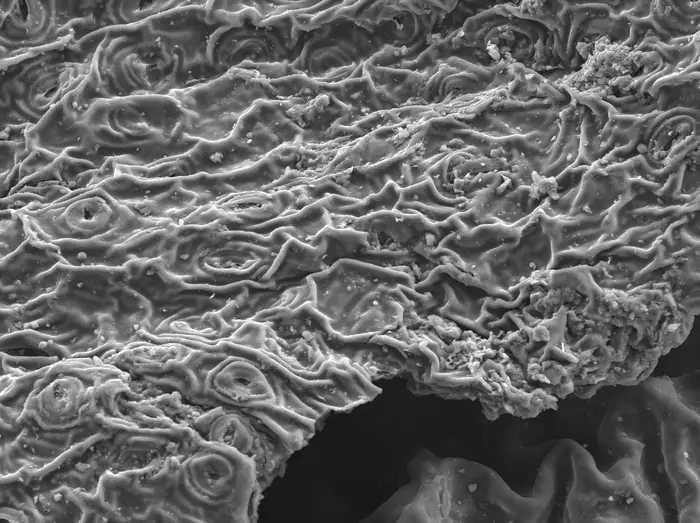When Maryland Gov. Wes Moore vented his concerns in December about the $761 million hole projected for his fiscal 2025 budget, environmental activists wondered what impact the shortfall would have on the state’s ambitious climate goals, which are also hobbled by a wobbly offshore wind industry and persisting interconnection delays.
But the advocates felt reassured when, last week, Moore announced $90 million in funds that would help electrify Maryland’s low and middle-income households and install EV charging infrastructure in disinvested communities, among other similar initiatives.
Moore, a Democrat, said at a press conference in Annapolis that $50 million of the total fund was dedicated to electrifying hospitals, schools, multi-family housing and other community buildings, and $23 million was designated for installing EV charging infrastructure in low- and moderate-income communities. The remaining $17 million, he said, will be spent on electric buses for Maryland’s public schools.
“I’m very clear about the fact that $90 million won’t solve our climate challenges in Maryland. But today, we make an important down-payment on a more sustainable future,” said Moore, “We are here to ensure that the clean energy transition brings everyone along, and not just some.”
We’re hiring!
Please take a look at the new openings in our newsroom.
See jobs
“This is the Maryland we’re building,” he added, “and we are going to build it in partnership with the Maryland General Assembly, advocates, and community leaders.”
The allocation comes from the Strategic Energy Investment Fund, boosted by the quarterly proceeds from the Regional Greenhouse Gas Initiative (RGGI), a multistate cap-and-invest program that makes electricity generators pay for their carbon emissions above established limits. The proceeds assist the participating states in funding their clean energy projects.
“This critical funding will accelerate Maryland’s efforts to electrify transportation and buildings so that we can meet our climate goals,” said Serena McIlwain, secretary of the Maryland Department of the Environment (MDE). The targeted allocation, she said, will result in “health, and environmental benefits from switching to clean homes and clean cars, which means installing heat pumps and driving electric vehicles.”
The one-time funding will be reflected in Maryland’s FY2025 budget proposal, which state government estimates show would include more than $300 million in climate-related investments and is geared toward implementing the state’s Climate Pollution Reduction Plan, unveiled in December.
Under the 2022 Climate Solutions Now Act, Maryland is required to reduce greenhouse gas emissions by 60 percent from 2006 levels by 2031 and have 100 percent clean energy by 2035 before achieving net-zero emissions by 2045. The climate plan estimates $1 billion in yearly investment over the next decade in order to achieve the state’s ambitious climate targets.
Environmental advocates were quick to point out that the administration will have to be creative to raise funds necessary to advance its climate and clean energy goals, given the fiscal 2025 shortfall.
“By investing in buildings and transportation, the two largest sources of greenhouse gas emissions, Gov. Moore has made a thoughtful investment while promoting equity. But this is the first step and there’s a long way to go,” said Kim Coble, executive director of the Maryland League of Conservation Voters.
Environmental advocates will keep pushing the administration and the General Assembly, she said, to find the funds needed to meet the state’s climate goals. The lack of legislative effort to raise money for climate action during the current session was disappointing, Coble added.
“There are some bills around funding and we’re supportive of any and all revenue generating ideas for climate right now. We will continue to push hard for designated funds for climate action,” she said.
Separately, encouraged by the $90 million booster, advocates and some lawmakers are urging the administration to also get behind legislation calling for increased building electrification, with an eye on equity instead of subsidizing fossil fuel-powered indoor heating equipment under the state’s current energy efficiency program, called Empower Maryland.
“That’s important because it allows for beneficial electrification, which, among other things, is going to improve the indoor air quality by stopping burning of fossil fuels in people’s homes,” said Del. Lorig Charkoudian, a Democrat from Montgomery County.
A recent study found that indoor air pollution from gas stoves was responsible for 12.7 percent of all childhood asthma cases. Living in a home with a gas stove increased a child’s risk of lifetime asthma by 32 percent, said another study. In addition to cancer and heart and lung diseases, air pollution is also said to cause mental health problems, decreased cognitive functioning, impacts to fertility and even premature death.
“Allowing beneficial electrification is going to reduce greenhouse gas emissions as well. That’s what this bill is going to achieve, which Empower does not allow for right now,” Charkoudiuan said.
With the overarching goal of reducing energy consumption statewide, Empower supports utility repairs and upgrades for limited-income households to help reduce energy use, improve air quality and health while lowering monthly utility bills.
Since its inception in 2008, the program has required the participating utilities and the Maryland Department of Housing and Community Development (DHCD) to administer a string of programs that save energy through appliance rebates and discounts, weatherization of homes and buildings, and energy improvements like insulation and air sealing for homeowners and commercial buildings.
A 2023 study by Maryland PIRG, a consumer advocacy nonprofit, estimated the program helped reduce Maryland’s greenhouse gas emissions by 9.6 million metric tons of CO2 as of 2020, equal to taking two million cars off the road for a year. Ratepayers saved over $4 billion on energy bills so far through the program incentives, the study said.
But the study criticized the program for, among other shortcomings, incentivizing “fossil fuel-powered appliances like furnaces and water heaters and locking in decades of climate and air pollution.” The study also said the program was not able to reach adequate numbers of low-income and energy-burdened homeowners who spent more than 12 percent of their gross income on energy in 2020.
The Maryland Office of People’s Counsel, a small agency which advocates on behalf of utility ratepayers, recommends households spend no more than 6 percent of their gross income on energy.
“The Maryland Public Service Commission (PSC) continues to allow Empower to incentivize gas appliances, including through DHCD’s programs,” said David Lapp, the people’s counsel for Maryland, in an email. “This is bad for customers because it locks them into the gas system for the life of the appliance, while gas rates are growing and highly efficient electric appliances will reduce customers’ bills.”
In 2022, households with incomes at or below 250 percent of the federal poverty level represented at least 26.5 percent of households, Lapp said, but benefitted from just 17 percent of total residential Empower program spending. “Limited-income customers were paying for Empower without receiving its full benefits,” he said.
In August, the DHCD submitted its new Empower Maryland plan to the PSC, committing nearly $355 million for energy efficiency retrofits and upgrades to benefit approximately 60,000 households during the 2024 to 2026 program cycle through energy efficiency upgrades and home repairs.
Lapp said the OPC supported DHCD’s expanded budget and efforts to reach a larger number of limited-income utility customers and new ways to qualify customers for benefits. “These measures should help mitigate Empower’s historic failure to fairly benefit low-income customers,” he said.
DHCD’s new plan was prompted by legislation sponsored by Charkoudian that passed the General Assembly in 2023. The bill required DHCD to, among other things, retrofit all limited income households with energy efficiency improvements by 2030 and invest federal and state funds to support weatherization for energy-burdened families.
The new legislation currently winding through the General Assembly would require electric utilities operating in Maryland to provide additional incentives to customers wanting to switch to electric appliances in homes and buildings. If passed, the measure would shift the program’s goals from reducing electricity use to reducing climate pollution while maintaining its primary focus on energy conservation and in-home improvements like weatherization.
This story is funded by readers like you.
Our nonprofit newsroom provides award-winning climate coverage free of charge and advertising. We rely on donations from readers like you to keep going. Please donate now to support our work.
Donate Now
“There are two actors here,” said Jamal Lewis, director for Mid-Atlantic & South for Rewiring America, a pro-electrification nonprofit. “There’s a legislature, which is considering a bill that would change the program’s focus from reducing energy consumption to greenhouse gas emission reduction. And the same can be achieved through the Maryland Public Service Commission, which also has the power to require greenhouse gas emissions reduction.”
A new study from the National Renewable Energy Laboratory (NREL), he said, confirmed that a majority of the U.S. households would see lower energy bills if they used heat pumps.
Emily Scarr, director of Maryland PIRG, said it was critical that the legislature act this year to update Empower Maryland. “Weatherizing our homes and making the shift to efficient electric appliances and heating will help lower utility bills and protect our health, making energy efficiency amongst the smartest investments we can make in our clean energy future,” she said.
Charkoudian said she was “cautiously confident” that the bill would pass this session. “The bill we have right now is essentially the same that we passed in the House last year but died in the Senate at the very end of session,” she said. “I think at this point, many of the senators have gotten a better understanding of it and I’m fairly optimistic that it’s going to pass in the Senate.”

















